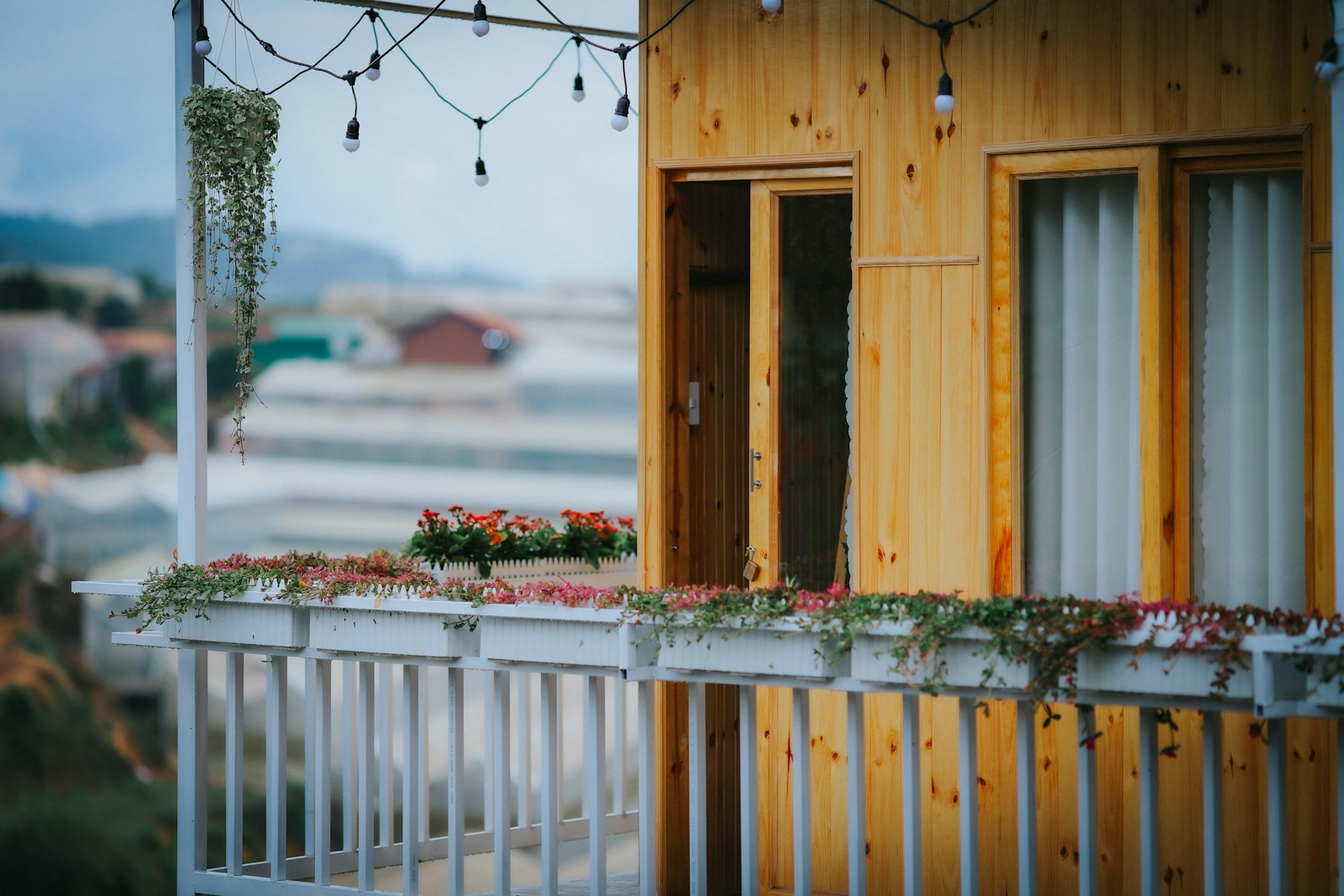Estimated reading time: 22 minutes
Starting a homestay in a remote or offbeat location in India can be highly rewarding but also challenging. Offbeat destinations offer travellers authentic cultural immersion and help distribute tourism benefits to rural communities. For entrepreneurs, homestays require relatively low investment and can empower local economies, but also demand creative solutions for infrastructure and marketing. This guide walks through the key considerations for launching a successful homestay business in India’s lesser-known locales, covering market research, legal requirements, design and amenities, guest experience, marketing, operations, finance, and long-term growth.
Benefits of Offbeat Locations
- Untapped Demand and Growth Potential: Demand for unique, local experiences is rising. Major tourism reports note that homestays account for only about 5% of India’s accommodations compared to 67% for hotels, indicating plenty of room for growth. The Ministry of Tourism estimates a shortfall of nearly 2 lakh rooms for tourists in India, highlighting opportunity in offbeat areas. Early adopters in these “untapped” rural markets can benefit as travelers increasingly seek authentic stays. As one hospitality executive noted, organized rural stays are “an untapped industry with major potential” that can spur local economies.
- Local Economic Development: Homestays channel income directly to local families and communities. By leveraging unused rooms or houses, hosts earn extra income while preserving local traditions. The National Rural Homestay strategy emphasizes that rural homestays are “low-scale, low-density, flexible and spontaneous”, with economic benefits going straight to local hosts. A survey found many homestay owners reinvest earnings into community needs (15% of owners) and empower women (18% are women owners). In practice, homestays create jobs (guides, cooks, cleaners) and can revitalize local crafts and agriculture.
- Unique Guest Experience: Offbeat homestays let travelers experience local culture, cuisine and scenery that big hotels can’t offer. Travelers are drawn to stays where they can “engage with traditions, support local economies, and discover hidden gems”. Unlike impersonal chain hotels, homestays (especially heritage-style homes) offer personalized cultural immersion – cooking local dishes, hearing traditional music, or staying in historic homes. This authenticity is a key selling point: platforms like Airbnb report rising interest in unique, flexible accommodations that spotlight hidden or offbeat locales.
Challenges of Offbeat Locations
- Infrastructure and Accessibility: Many rural areas lack basic amenities. Poor roads, unreliable electricity and water, and weak internet connectivity can deter tourists and make operations difficult. Owners may need to invest in infrastructure upgrades (e.g. backup power, water purification) or work with communities to improve access. Accessibility issues also require planning – remote homestays must clearly communicate transportation options and possibly arrange pickup services.
- Seasonality and Demand Variability: Offbeat regions may see seasonal tourism (e.g. monsoon-dry or festival seasons). Demand might spike during local festivals or cooler months and drop off-season. Hosts must budget for low-occupancy periods and consider off-season strategies (e.g. discounted rates, special packages). Limited tourist seasons also mean hosts should manage expectations and diversify income (for example, through offseason retreats or workshops).
- Regulatory Complexity: Compliance can be daunting. Homestay rules vary by state, with different registration, safety and tax requirements. Owners must navigate zoning, building codes, fire and health regulations. Some states require homestays to register as hotels or B&Bs (often with tourism departments) and meet basic standards (see Legal Requirements, below). Obtaining all licenses (e.g. GST registration, food license) can be challenging in remote areas. Support from local tourism officials or trade associations can help.
- Marketing and Reach: Getting the word out in obscure locations is harder. Without a well-known address, homestays must work extra to be discoverable online and offline. In a world of online travel agencies (OTAs), remote homestays often rely heavily on digital marketing to reach global travellers. Building an online presence from scratch – through a website, social media, listings on OTA platforms, and positive reviews – requires time and skill. Connectivity issues can impede prompt communication with potential guests.
- Maintaining Quality and Standards: Guests still expect comfort and cleanliness even in rustic settings. Meeting those expectations can be harder off the beaten path. For example, providing consistently hot water or fast Wi-Fi may require special solutions (e.g. solar heaters, satellite internet). Ensuring food safety and hygienic bedding requires training or hiring trustworthy help. Offbeat hosts must strive to provide a dependable, comfortable experience despite infrastructural constraints.
- Community and Environmental Impact: Growing tourism can strain local resources (water, waste management) and alter community life. Responsible homestays must mitigate issues like waste and overcrowding. Without careful planning, influxes of tourists can “destroy the rural spaces” guests came to enjoy. Hosts should engage the community early, set visitor guidelines (e.g. litter rules), and limit guest numbers to sustainable levels to preserve the environment and culture.
Market Research and Choosing the Right Location
- Analyze Demand and Competition: Before investing, research the target area’s tourism potential. Use government and industry data: tourism reports often rank emerging destinations and show accommodation shortages. Identify what draws visitors (e.g. wildlife, pilgrimage site, trekking, cultural festivals). Check OTA platforms to see which nearby locations have demand but limited supply. For instance, a study pointed out a large room deficit in Indian tourism, creating “space for alternate accommodations” like homestays. Finding a place with growing interest but few lodging options is ideal.
- Target Audience and Positioning: Decide whether to cater to budget travelers, adventure seekers, families, or luxury guests. For example, some areas may attract backpackers and drive up budget stays, while others (heritage villages, jungle resorts) may command premium prices. Consider niche tourism trends: the Ministry of Tourism identifies homestays alongside agritourism, ecotourism, tribal tourism, and wellness as niche rural experiences. A location near trekking routes might suit adventure tourism; one with cultural heritage suits heritage homestays.
- Accessibility and Infrastructure: Even offbeat guests need a degree of comfort reaching you. Ensure reasonable road access or proximity to airports/railways. Check logistics: how far is the nearest market, hospital, mechanic, etc.? For luxury models, ensure there are reliable utilities (or plan alternatives). Evaluate risk factors like flood or landslide seasons. Sometimes the novelty of a truly remote stay is a draw, but owners must guarantee safe and practical travel for guests.
- Community Engagement: Visit the community to gauge receptiveness. Ideal places have residents interested in hosting and offering experiences (guided walks, cooking lessons, handicrafts). Assess local talent: Are there naturalist guides, artisans, or chefs? A homestay thrives when it involves and benefits the community (e.g. hiring locals, buying produce). Select a location where homestays would be a welcome source of livelihood, not a disruption to local life.
- Regulatory Environment: Different states have different homestay norms. Check local tourism department rules (some states proactively register or license homestays, others have lenient or no specific rules). For example, Kerala and Himachal Pradesh have streamlined homestay registration processes. Also confirm land-use and building compliance with local panchayat or municipal limits. Because guidelines can change (a new national policy is anticipated, according to 2025 reports), keep abreast of current legal frameworks in your chosen state.
Legal and Regulatory Requirements in India
- Registration and Classification: Many states encourage formal registration of homestays with the tourism department. Since 2018, the central Ministry of Tourism has had guidelines for “Incredible India Bed & Breakfast/Homestay” establishments. Under these, approved homestays are classified into Silver or Gold tiers based on amenities and services. To qualify, owners typically must live on-site and let out 1–6 rooms (max 12 beds) on a bed-and-breakfast basis. Classification requires periodic inspections (usually every two years). While classification is voluntary, it signals quality assurance and gives access to marketing and incentives.
- Building, Safety and Health Compliance: Your homestay must comply with general building regulations (approved plans, fire safety, structural safety, etc.). Even in rural areas, local authorities often require fire extinguishers, emergency exits, and signage for lodging establishments. A sanitary certificate or clean water supply proof might be needed. If you serve meals, you may need a food safety license (FSSAI) and adhere to hygiene standards. Some states ask for a NOC from the local police to ensure the owner’s background check. Always obtain a GST registration if your income crosses the threshold.
- Taxation and Insurance: Homestays may be treated as commercial enterprises for taxes. Keep clear records of all income/expenses for income tax filings. Depending on the structure, you may need to register as a small business or sole proprietorship. Check if any local tourist tax (levied per room/nationals, etc.) applies. Ensure the property – include building, furniture, guest liability (in case of accidents), and loss due to natural calamities, which can be more likely in remote areas.
- Government Incentives and Support: The Indian government offers some support for rural homestays. Recent policy proposals (expected soon) include fiscal incentives, subsidies or loan schemes for homestay owners and aggregators. For instance, states like Kerala and Karnataka have offered grants to upgrade homestays. Check schemes like the “National Strategy for Promotion of Rural Homestays” for training, marketing assistance or micro-credit. Participating in such programs can reduce startup costs.
- Local Community Agreements: In many villages, you’ll need to negotiate amicable terms with your community (e.g., land use, noise norms). Ensure your homestay activities do not conflict with local customs or regulations (for example, respecting religious sites or agricultural cycles). Draft clear house rules for guests (noise curfews, waste disposal) and have them visible. It’s wise to involve community leaders early so your homestay is seen as a community asset, not an intrusion.
Designing and Setting Up the Homestay
- Infrastructure and Rooms: Plan for guest comfort within local constraints. Even budget homestays should offer at least a basic private or shared bathroom with hot water (a solar geyser can be a smart investment). For premium stays, attached bathrooms, high-quality linens, and climate control (fans, heating, or AC depending on the climate) are expected. Ensure sturdy, comfortable bedding (think mosquito nets in jungles, down duvets in mountains). Common areas are important: a cozy lounge or verandah for guests to relax, a communal dining table if you serve meals, and outdoor seating that highlights the natural setting.
- Local Style and Amenities: Use local architectural styles and materials (bamboo, stone, mud-brick, reclaimed wood) for authenticity and sustainability. Decorate with regional crafts, textiles and artwork to immerse guests in local culture. Provide amenities such as clean towels, toiletries, and drinking water. In offbeat areas, basic Wi-Fi can be a luxury; offer it if possible, or at least ensure good mobile connectivity. Consider guest needs: phone charging stations, luggage racks, and spaces to unpack. For remote homestays, a well-equipped first-aid kit and emergency contact info should be provided in each room.
- Sustainability Measures: Sustainability is both ethical and appealing. Install rainwater harvesting and solar panels if feasible – off-grid power or heating can be a selling point in eco-conscious markets. Manage waste through composting and recycling; avoid plastic by providing filtered water and reusable containers. Use LED lighting and energy-efficient appliances. Cultivate a kitchen garden for organic vegetables or herbs to use in meals – this reduces costs and enhances freshness. These practices can reduce operating costs over time and attract guests who value responsible tourism.
- Amenities and Services: Provide clear signage (even a rustic board) and a map for guests to find you. Stock guidebooks or create your own local guide with attraction details. A small library of local history books can be a thoughtful touch. Consider offering optional services: laundry, breakfast (using local produce), packed lunches for day trips, or bicycles/motorcycles for rent. Safety essentials like fire extinguishers, smoke alarms, and emergency lighting are a must. Training domestic help (or family members) in basic hospitality and health protocols (especially post-COVID sanitation) will ensure consistent service.
Creating Unique Guest Experiences
- Cultural and Local Activities: Offbeat homestays succeed by offering more than a bed – they offer experiences. Organize cultural activities such as local cooking demonstrations, folk music/dance evenings, or craft workshops with local artisans. Arrange nature walks, farm visits, wildlife safaris, or guided treks if near forests or hills. Festivals and rituals unique to the area (harvest festivals, tribal ceremonies) should be highlighted; guests can be invited to participate or simply observe respectfully. A guide or friendly host who narrates local folklore adds tremendous value.
- Personalisation: Guests expect personalised service in homestays. For example, custom meal preferences (vegan, kids, spicy levels), flexible check-in times, or surprise treats (a basket of local fruits or snacks) can make stays memorable. Luxury homestays might offer add-on services such as yoga classes, spa/massage, or curated private tours (for instance, hiring a boat for a lake nearby). Even budget homestays can personalize by greeting guests with a welcome drink, offering laundry service, or providing packed snacks for early departures.
- Adventure and Nature: If your location allows, offer adventure elements: guided night walks, birdwatching, river rafting or boating, mountain biking routes. Even something as simple as a star-gazing evening with a telescope can delight city guests. Provide guests with equipment when possible (maps, binoculars, sports gear) or connect them with reliable guides. Highlight any exclusive natural features: a private patch of forest, a waterfall on the property, or a scenic viewpoint.
- Community Interaction: Facilitate positive guest–community interactions. Encourage guests to visit nearby schools, temples, markets or craft centres. Arrange for village walks or meals cooked by village women. This not only enriches guests but also ensures tourism income stays local (guests may buy souvenirs or hire local transport/guides). Many hosts have found that creating opportunities for guests to “support local economies” by shopping and interacting with residents both delights visitors and boosts community welfare.
- Seasonal and Thematic Packages: To capitalize on peak times, create special packages. For example, a “Monsoon Retreat” with guided nature walks and local rain recipes, or a “Harvest Festival Homestay” that includes participation in local harvest rituals. For luxury markets, tailor packages (honeymoon cottages, wellness weekends). For niche audiences (photographers, birders, yoga practitioners), organise relevant workshops or retreats. Make these offerings prominent on your marketing to attract guests looking for specific experiences.
Marketing Strategies (Online and Offline)
- Build an Online Presence: Even offbeat homestays need a professional digital footprint. Create an easy-to-navigate website or listing with high-quality photos, a compelling story, and clear details (amenities, rates, location). Emphasise what makes your homestay special (e.g. “Stay in a 100-year-old farmhouse with organic meals”). Use platforms like Google My Business and TripAdvisor so guests can find reviews. Ensure you have a consistent name, address and phone number across all listings to boost search ranking.
- List on OTAs and Aggregators: Online Travel Agencies (OTAs) like Airbnb, Booking.com, Expedia, OYO, and MakeMyTrip expose your homestay to global audiences. Listings on OTAs are essential: they handle bookings and payment processing and increase visibility. Optimize each listing with attractive descriptions, competitive pricing, instant-book options and, especially, eye-catching photos. Research OTA commission models (generally 10-20%) into your pricing. Many homestay owners report significant revenue gains from OTAs – for example, over 90% saw increased guest outreach after listing online.
- Social Media and Content Marketing: Use social media to showcase your homestay’s story. Instagram and Facebook are great for visual storytelling: post photos of your property, local landscapes, cultural events, and happy guests (with permission). Share guest testimonials, behind-the-scenes videos (like cooking a local dish), or live sessions showing your homestay. Engage travel bloggers and influencers for reviews or features. Regularly update a Facebook page or Instagram story highlights to stay in followers’ feeds. Content can also include blog posts or videos on local attractions and experiences, which can rank on Google and attract niche travellers.
- Local and Niche Promotion: Don’t ignore offline and niche channels. Partner with local tourism offices to be listed on destination websites or brochures. Attend regional travel fairs or community festivals to network and distribute flyers. Connect with tour operators (e.g. trekking tour organizers, wellness retreat organizers) who might include your homestay in their packages. If your homestay has a unique theme (heritage, wildlife, culinary), join relevant travel associations or online communities to reach those target audiences.
- Harness Reviews and Word-of-Mouth: Encourage satisfied guests to leave reviews on OTAs, Google, and TripAdvisor. Positive reviews dramatically improve trust for offbeat locations. Respond to reviews (thank positive ones, address any issues professionally) to show prospective guests you are attentive. Offer referral discounts: a small rebate for guests who bring new visitors can turn guests into promoters. Since travel decisions heavily rely on word-of-mouth, these organic channels are critical.
Managing Operations and Staffing
- Owner and Family Involvement: In budget homestays, the owner’s family often manages daily operations. This personal touch can be an advantage: guests value authentic local host interactions. Prepare your family for hosting tasks – from greeting guests to serving breakfast and cleaning rooms. If needed, take basic hospitality training (many NGOs or tourism boards offer short courses for homestay owners).
- Hiring Local Staff: As your homestay grows or for larger luxury properties, you may need help. Common hires include a cook/chef (especially if you serve meals), housekeepers, gardeners or maintenance helpers, and a local guide or driver. Hiring locals builds community goodwill and usually reduces turnover. For small operations, part-time or as-needed staff (e.g. one cleaner on busy weekends) can control costs. Ensure staff are trained in guest etiquette and basic English or Hindi phrases if needed. Women staff can be especially effective for housekeeping and kitchen roles and contribute to women’s employment locally.
- Training and Quality Assurance: Invest time in training anyone who interacts with guests. Teach staff about hospitality basics: punctuality, cleanliness, respectful communication, and problem-solving. For example, cleaners should know how to properly sanitize rooms, while kitchen help must maintain hygiene standards. Conduct regular reviews of rooms and services – treat an inspection report like a hotel would. Even one disgruntled guest can harm an offbeat business via a bad online review.
- Supply and Inventory Management: Operating remotely means careful planning of supplies. Maintain an inventory of essentials (toiletries, linens, groceries) and re-order before running out. Stock up during peak season on non-perishables. Build relationships with reliable suppliers or wholesalers (even in the nearest town) for vegetables, meats and consumables. An emergency fund or buffer stock is prudent for unforeseen delays (roadblocks, delivery issues).
- Day-to-Day Systems: Put simple systems in place: a guest registration book (for safety and compliance), check-in/check-out procedures (keys, ID copies), and clear house rules. Use spreadsheets or simple software to track bookings, expenses, and revenue. Even very basic accounting (recording daily cash flow) helps financial clarity. Cleanliness checklists ensure nothing is missed between guest stays. If scale grows, consider property-management software for reservations and housekeeping schedules.
- Community Coordination: Coordinate with villagers on shared issues. For example, align on quiet hours, water usage times, and waste disposal. In many communities, homestays collaborate (sharing guides or transport) to offer better services. You might form or join a local homestay association for joint marketing and negotiation power with suppliers or authorities.
Ensuring Quality and Guest Satisfaction
- Cleanliness and Safety: Consistently clean rooms, toilets, kitchens and common areas. In many remote homestays, the biggest complaint is poor sanitation, so focus on hot water availability, mould-free bathrooms, and fresh linens. Install safety measures (handrails, non-slip mats, smoke alarms) and communicate emergency procedures to guests. Quality isn’t just comfort; it’s also the peace of mind that nothing unsafe will happen during their stay.
- Service Excellence: Small touches can greatly improve guest satisfaction. Greet arrivals warmly, give a quick orientation (show around rooms, point out eating times, highlight cultural norms). Be proactive: anticipate guest needs (extra blanket at night, transporting luggage). Respond promptly to requests or issues (e.g. if a pipe leaks, fix it quickly). Going the extra mile – such as arranging a late-night snack for a tired traveller – creates memorable experiences and good reviews.
- Consistent Standards: Whether budget or luxury, guests must receive exactly what was promised. Misleading photos or descriptions lead to dissatisfaction. Ensure that room photos match reality, and amenities listed (AC, Wi-Fi, breakfast types) are actually provided. Regularly re-audit facilities: repair wear-and-tear (plumbing, cracked tiles, old mattresses) promptly. Consider forming habits like “surprise checks” of rooms between bookings to maintain standards.
- Feedback and Improvement: Encourage guests to give feedback, both informally during their stay and via review platforms afterward. Provide a guest feedback form or simply ask them how they liked their stay. Take criticisms constructively: if multiple guests mention, say, weak Wi-Fi or too-soft pillows, address them immediately. Keeping a log of recurring suggestions helps prioritize upgrades. Guests appreciate when they see their feedback implemented – it shows you care about their comfort.
- Certification and Recognition: Although optional, formal recognition boosts credibility. Strive for the silver or gold homestay classification under the Ministry’s scheme – this signals you meet official standards. Consider joining eco- or sustainable tourism networks that provide certifications (many travellers look for eco-friendly stamps). Such credentials can make your homestay stand out to discerning guests.
Budgeting, Pricing Strategies, and Profitability
- Initial Investment: Carefully estimate startup costs: land/building purchase, major renovations (plumbing, wiring), decor, furniture, kitchen appliances, and licensing fees. Factor in additional costs unique to offbeat areas, like solar systems or borewells if utilities are scarce. Government subsidies (see Legal) can offset some expenses. Keep reserves for unexpected expenses (like structural repairs or vehicle purchases for guest pickup).
- Cost Management: Ongoing costs include staff salaries or honoraria, utilities, maintenance, and supplies. In remote locations utilities (diesel, inverters, bottled gas) can be major costs; plan budgets accordingly. Efficient practices (rainwater harvesting to reduce pump electricity, solar lighting) lower bills. Bulk-buy supplies when possible, and minimize waste. Track expenses meticulously – even small savings (e.g. reusing linens a second day if guests allow) add up.
- Pricing: Set room rates based on costs, competition, and target market. Budget homestays in rural India often range from INR 1,000 to 5,000 per night; midscale/luxury homestays can go to INR 7,000–15,000+. Use market research (OTA rates in nearby areas) to be competitive. Offer tiered pricing: basic rooms at lower rates, premium rooms (with better views or amenities) higher. Seasonal pricing is common: raise rates during festivals or peak seasons, offer discounts in the low season. Always account for OTA commissions in your rates if listing online.
- Revenue Optimisation: With often limited rooms, aim for high occupancy and maximise ancillary services (meals, tours, souvenirs). Encourage longer stays by offering discounts for 3+ nights. Create package deals (room + meals + activity) to increase per-guest revenue. Monitor occupancy rates and adjust marketing or pricing if rooms are empty. For luxury homestays, focus on the high-end market with exclusive add-ons, whereas budget homestays can target backpackers and families with group discounts.
- Profit Margin and Return: Profits depend on cost control, occupancy, and pricing. Homestays can achieve good profit margins due to low overhead (no franchise fees, minimal advertisement costs). A survey indicated homestays have strong economic multipliers: for example, homestays’ output multiplier is ~2.04 vs. 1.83 for overall tourism. This suggests efficient resource use and revenue generation. However, be conservative: factor in slower growth and reinvest a portion of profits for maintenance, marketing and upgrades.
- Financial Tracking: Use simple accounting (software or ledger) to track income (room, food, tours) and expenses. Separate personal and business finances. Keep receipts and invoices for all transactions. A clear financial picture helps in filing taxes and analyzing profit. If scaling up, consider consulting an accountant to optimise taxation and bookkeeping.
Long-Term Sustainability and Growth
- Continuous Innovation: Stay updated on tourism trends. Offer new experiences (e.g. cooking classes, wellness workshops) as interests shift. For example, wellness tourism and experiential travel are booming; homestays that adapt (yoga retreats, farm-to-table experiences) attract niche segments. Solicit guest ideas and innovate seasonally to keep offerings fresh.
- Brand and Network Building: Think beyond a single property. Build a brand identity around your unique niche (heritage villa, eco-lodge, farmstay). If multiple homestays exist in your area, form a consortium or network for joint marketing. Alternatively, later you might manage or franchise other homes under your brand, ensuring consistent quality. Strong branding (logo, slogan, storytelling) can turn your homestay into a recognisable name, leveraging repeat guests across different locations.
- Community Sustainability: Long-term success requires community buy-in. Train other locals (younger residents, women’s groups) in hospitality skills to keep talent in the area. Support local schools or causes – guests value responsible hosts. Ensure tourism growth doesn’t outpace community capacity; for example, limit expansion if water resources are strained. A sustainable homestay cares for its surroundings so that the offbeat charm endures for future guests.
- Upgrades and Diversification: As profit allows, invest in higher-end amenities (a small pool, premium cottages, upgraded décor) to enter new market segments. Alternatively, diversify your property into other services like a small on-site restaurant or event space for weddings/retreats. Diversification spreads risk: if homestay bookings dip, income from events or long-term rentals can help.
- Marketing to Niche Growth: Over time, target specialised markets. Some homestays successfully transformed into luxury chains by focusing on a niche (e.g. “heritage homestays” or “jungle safaris”) and marketing heavily in those segments. Study big players in the space (without copying) and adapt relevant strategies. Keep an eye on policy shifts: with new national homestay schemes expected, align growth plans to take advantage of government programs (such as infrastructure grants or e-portal listings).
- Brand Storytelling: Build a story around your homestay that resonates. The narrative of a local family preserving traditions can appeal to the “culture-seeking traveller”. Use your website and marketing materials to share your journey and mission. A strong story differentiates you from impersonal hotels and can turn guests into loyal fans who bring others.
- Monitoring and Adaptation: Finally, treat your homestay as a living project. Monitor guest feedback and market trends continuously. The travel industry evolves – for instance, if remote work surges, offering high-speed internet and workspaces can attract long-stay guests. By staying adaptable (introducing new amenities, adjusting pricing or exploring new markets), your homestay can remain profitable and vibrant over the long term.
Starting a homestay in an offbeat Indian location is a journey that blends hospitality with entrepreneurship and community development. With thorough planning, adherence to regulations, and a focus on quality and unique experiences, a homestay can flourish as both a meaningful business and a catalyst for local growth. Careful attention to each stage – from market research and design to marketing and sustainability – will help ensure your homestay not only survives but thrives.
Sources: Industry analyses and tourism reports informed this guide, along with official guidelines and expert commentary. These references reflect current trends and policies in Indian homestay tourism.
For the latest tech news and reviews, follow Rohit Auddy on Twitter, Facebook, and Google News.






